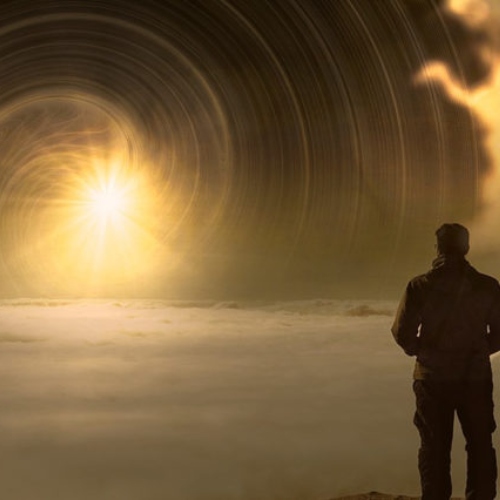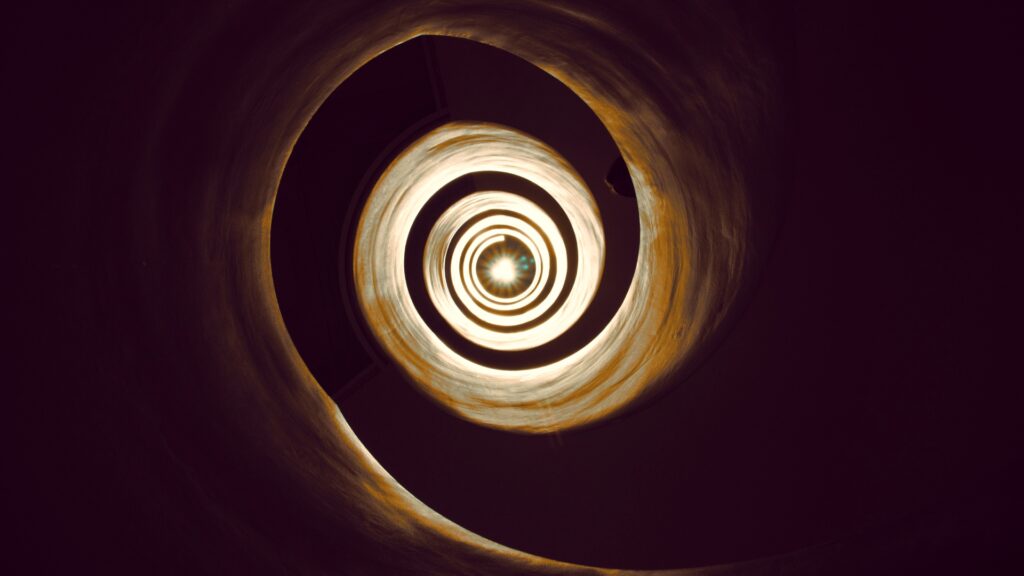
In this four-part series, A. H. Almaas gives a thought-provoking reflection on Sleeping, Dreaming, and Dying by the Dalai Lama. In Part 2, he delves into near-death experiences through the lens of the Dalai Lama and Tibetan Buddhist teachings.
Exploration of Near-death Experiences
By A. H. Almaas
In chapter 8 of this book with HHDL, the topic of near death experiences was discussed. The Western researchers presented to HHDL their findings, like the common experiences of seeing white or glowing light at the end of a tunnel, the meeting of already deceased relatives, and meeting divine beings like Christ. These are some of the elements that have been established throughout many decades from the reports of individuals who came close to death in accidents, illnesses, or surgeries. The researchers wanted to know what HHDL thought of these findings and their relation to what happens after death, according to what he knows and according to Tibetan teachings. I think they were taken aback, and probably surprised and dismayed, that he did not accept their findings as necessarily true about what happens after death. This was based on his experience and on the Bardo Thodel, the major Tibetan Buddhism text about the bardo and the stages that consciousness goes through after physical death.
More Dream than Near Death?
HHDL responded, saying: “I am wondering whether these experiences are more of a dream type, because one constant theme that keeps coming up is this experience of joyfully reuniting with the relatives. It is very rare that relatives who have already passed away will still be in that type of existence. They would have already taken rebirth in another realm of existence … I think that it’s more likely that due to the manifestation of a person’s own imprints, or latent propensities, these very images of loved ones come to mind and one has the sense of receiving advice or encouragement from them. But it’s purely a subjective phenomenon.” pp. 188-189. The discussion continues about the fact that Buddhists would find it unlikely that these experiences happen in the bardo, or the intermediate stage after physical death.

I realize that I agree with HHDL’s question about whether these near death experiences say anything about what actually happens after death. “At this point His Holiness offered the first challenge to the current interpretation of these observations as related to ‘true’ death experiences.” p. 188. The individuals who reported such experiences did not actually totally die; they came back. So the connection to the body was not totally severed, and this could greatly affect what happens to the stream of experience of the individual.
On the other hand, if I were in that discussion, I might have said, “The Tibetan view of what happens after death—taken mostly from the Bardo Thodel and attributed to Padmasambhava—is only one view. Other teachings and traditions have other views, and most of them are different from the Tibetan view of stages of death and after death.” HHDL was assuming the Tibetan view of the stages after death, and all the Western individuals who were with him were simply accepting it as the true description of what happens. Maybe some of them thought otherwise, but it was not brought into the discussion.
I think it would have been more interesting if other teachings about death had been brought in. Or at least, if someone had questioned the Tibetan view as the only way of viewing what happens after death. I am writing this because I am aware that many in spiritual circles these days do not question the Tibetan view, and think it is the only true spiritual teaching about what happens after death. I think even in the Tibetan tradition there are significant variations, and all other traditions including different Hindu teachings, Taoism, Christianity, Kabbalah, and Sufism, among others, have their own views.
HHDL was actually open later in the discussion, when the participants brought in more findings, to reconsider the teachings or take a fresh look at them to see whether there might be a need for some modification or addition. This is clearly an indication that HHDL would have been open to discuss alternative views of after-death experience.
The Soul after Death

Since I usually bring in my own experience in relation to what I read, I realized that in the many times I have guided students or others in their journey after physical death, I have not seen heavenly lights, family members, or divine beings. It was basically the individual soul of the deceased person, struggling with whatever condition it was left with. The more spiritual realization the individual had accomplished during life, the more light, luminosity and love was there, but in their soul, not outside of it. If they had not done much spiritual practice then there was much darkness and struggle, but even then it depended on the individual and how that person lived his or her life. This part is similar to the Tibetan version, but I won’t say that I have always noticed each soul going through the stages outlined in the Bardo Thodel. Some individuals’ experiences approximated what that teaching says, but some individuals’ experiences did not follow it, or only partially. Clear light arose at the moment of death for some, but I won’t say for all, and some individuals followed the various cessations in the after death stages but not all.
This led me to think that the Tibetan teaching about the stages after death has much truth in it, but it is not to be taken as the gospel, and not to be considered the only way things can happen. We can think of it as possessing good pointers about what is possible, but not definite truth about what has to happen. One difference, for instance, is that the Tibetan teaching does not discuss how a deceased individual can be guided by his or her teacher on earth. There is no reference to the fact that that there can be a back and forth communication between the two, helping the deceased to deal with his or her after-death experience in a way that moves that person in a positive and liberating direction. The Tibetans engage in rituals and recitations of the Bardo Thodel and other texts for the deceased, but these rituals are usually not tailored to the individual and his or her particular situation. The Tibetan view tends not to recognize that practice can continue after death—in other words that the soul can continue to learn and grow. Instead it seems to believe that all souls go through the same stages, and what happens depends solely on what they learned in their life. Only very advanced sages or saints are sometimes exempted. This has not been my observation.
I do not consider my experience to be incontrovertible evidence or proof of the truth of what I believe I saw or experienced. After all I am still alive and in the body and it seems to me that direct corroboration of what the deceased individual is actually experiencing can only come from being on their side of the death divide. What I would like to encourage in the meantime is to be open to what various teachings say, and, at the same time, question everything, even your own perceptions, until a more satisfactory method of verification than we have at present becomes available.
I am quite heartened by the many meaningful responses to the first contemplation and I am especially glad that many are interested in dialogue and in interaction with each other. Each has a contribution to make, and I appreciate it more when I see a conversation going on with each other, not just with me.
Buddhism and the Soul: Part 3>>
